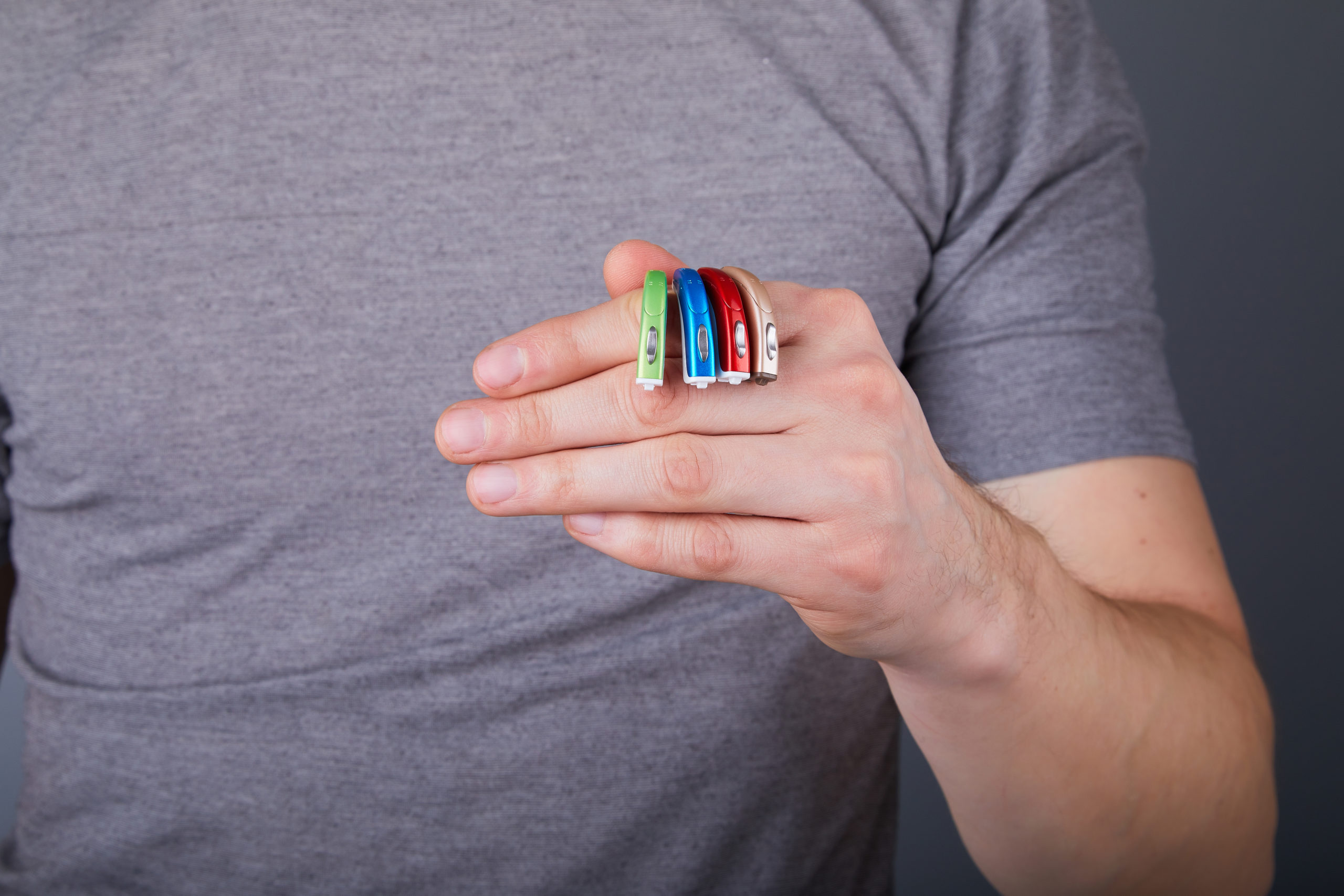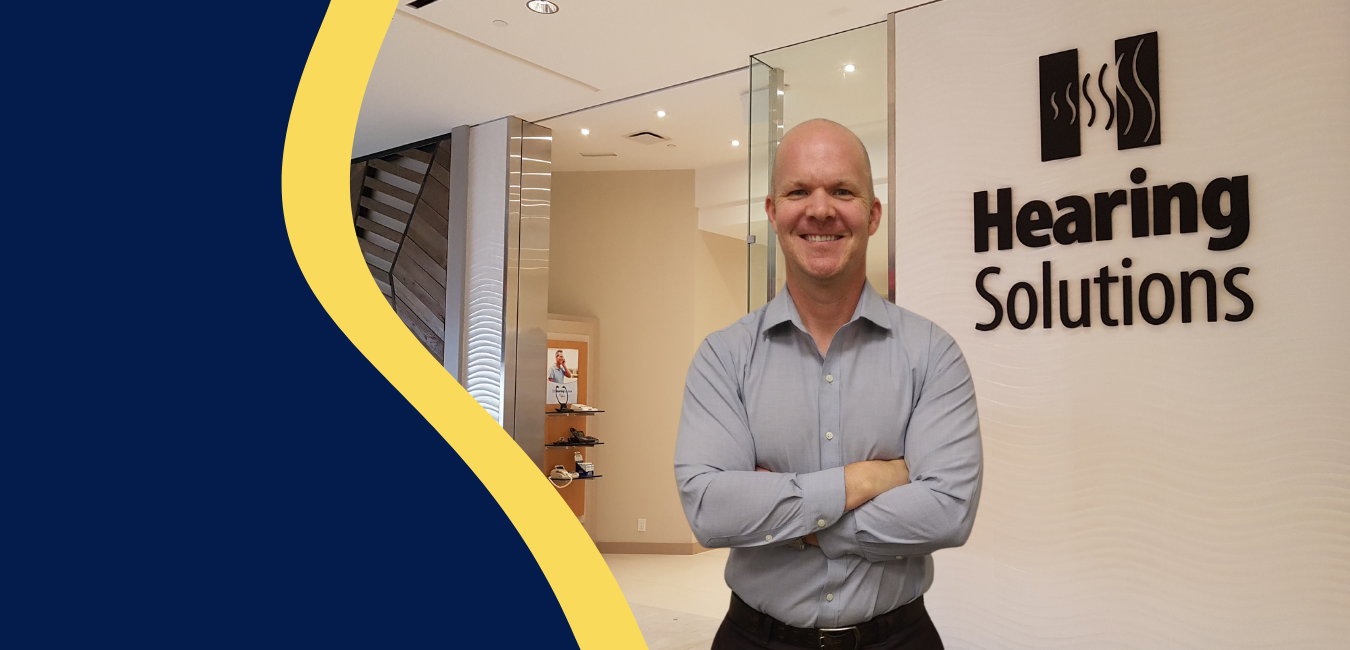Different Hearing Aids for Different Hearing Needs: How Do You Choose?
Many different types of hearing aids are on the market today, so how do you know which one would best suit your own needs?
While hearing aids do not have the power to restore full auditory abilities, they can improve your quality of life by eliminating complete hearing loss. Keep reading to find out what you should consider before choosing a hearing aid.
What is a hearing aid?
A hearing aid is a small electronic device recommended by Healthcare professionals (more specifically, audiologists) that is either inserted directly into the ear, or it can be worn behind the ear to magnify sound vibrations.
Hearing aids consist of a microphone, amplifier, and speaker that improve overall hearing and can help the individual with speech comprehension when engaging in conversations.
How do hearing aids work?
Hearing aids work by amplifying noise that your ears normally wouldn’t be able to pick up on. These days, most hearing aids are digitally powered. They are smaller, more discrete, and include a rechargeable battery. A small microphone is used to collect sounds and convert them into digital code that is read by a computer chip in the hearing aid.
Depending on your level of hearing, the hearing aid will adjust accordingly as it translates the code into signals. These signals are then picked up by your ear as sound waves through the digital speakers.
Types of Hearing Aids
Hearing aids have evolved over the years to become much smaller, as the demand for more discrete models has increased.
They can vary in function, features, and sizes meaning the prices can also vary quite a bit. It’s important to note that smaller hearing aids may not have the same level of power or improve your hearing as much as larger models.
These are some common hearing aid styles, starting from the smallest, least visible types:
Completely in the Canal (CIC) or Mini CIC
A completely-in-the-canal hearing aid is meant for adults with mild to moderate hearing loss. It’s a custom mold that fits directly inside the ear canal and is the smallest and most discrete kind of hearing aid.
As with any hearing aid, there are benefits and drawbacks. The main benefit is that since it sits inside your ear canal, it is far less likely to pick up or amplify any wind noise. Some drawbacks include smaller batteries (resulting in a shorter lifespan compared to bigger ones), fewer extra features (such as volume control), and being more likely to be clogged by earwax.
In the Canal
Similar to the CIC, the in-the-canal (or ITC) hearing aid also sits inside your ear canal and is meant for adults with mild to moderate hearing loss. Though it’s not as discrete as CIC’s, it’s still far less visible than larger models. Again, there are some drawbacks to this model as well – such as difficulty adjusting the settings (due to the smaller size) and earwax clogging the speaker as well.
Behind the Ear
Behind-the-ear (BTE) models are appropriate for all ages and levels of hearing loss. It hooks over the top of your ear and rests behind it. A tube is used to connect the earpiece (the earmold) that goes inside your ear to the actual hearing aid.
The BTE models tend to be the larger ones on the market, however recent technological developments have allowed for smaller, less visible behind-the-ear models to be created. This model has more benefits than the previous two mentioned, including enhanced amplification abilities, directional microphones, and a rechargeable battery. The only real drawback would be that it’s more likely to pick up on wind noise.
Receiver in Canal or Receiver in the Ear
Much like the BTE model, the Receiver in canal (RIC) and Receiver in the ear (RITE) hearing aids use a tube that connects an over-the-ear earpiece to the hearing aid in the canal.
RIC & RTE models have slightly smaller behind-the-ear components, easier to control settings, directional microphones, and a rechargeable battery. Much like the other models, they are susceptible to earwax.
Open Fit
The final type of hearing aid is the Open Fit. What makes this one different from the others, is it allows for low-frequency noise to enter the ear naturally while amplifying high frequency sounds through the hearing aid. This model is best for those who still have some hearing abilities but need a bit of help hearing specific high frequencies.
It’s similar to the BTE style-wise, as it uses a tube to connect the over the earpiece to the hearing aid in the ear canal. However, the open-fit hearing aid is more visible and has a harder time fitting into the ear because of the non-custom dome.
Before You Buy
When you are in the market for a hearing aid, you should explore all of your options to get a good understanding of what type of hearing aid will work the best for you. Here are some extra tips before you buy:
- Get a checkup. See your hearing healthcare professional to rule out any correctable causes of hearing loss, like earwax build-up. Also, be sure to have your hearing tested by a specialist.
- Get a referral to a reputable audiologist or hearing instrument specialist.
- Ask about getting a trial period. It can take you a while to get used to a device to decide if it will be the right fit for you.
- Think about what you need in the future, and ask if the hearing aid you have selected can have increased power so it can still be useful if your hearing loss gets worse.
- Always check for a warranty that covers parts and labour over a specific amount of time.
- Beware of misleading claims. Hearing aids cannot restore your normal hearing or eliminate all background noises.
- Plan ahead for the expense. The cost of hearing aids can vary widely, from about $1000 to a few more thousand dollars each. Professional fees, remote controls, special features, and accessories can cost extra as well. Speak with your audiologist about your needs and expectations.
For more information about which hearing aids are right for you, contact Hearing Solutions to book your appointment today at 1-888-811-9979.
References
Lindberg, S. (2021, February 9). Types of hearing aids: Benefits, options, and how to choose. Healthline. Retrieved September 19, 2021, from https://www.healthline.com/health/types-of-hearing-aids#what-is-a-hearing-aid.
Mayo Foundation for Medical Education and Research. (2020, October 21). Hearing aids: How to choose the right one. Mayo Clinic. Retrieved September 19, 2021, from https://www.mayoclinic.org/diseases-conditions/hearing-loss/in-depth/hearing-aids/art-20044116. Victory, J. (2021, June 16). Types of hearing aids: Learn about the most common styles. Healthy Hearing. Retrieved September 19, 2021, from https://www.healthyhearing.com/help/hearing-aids/types.









